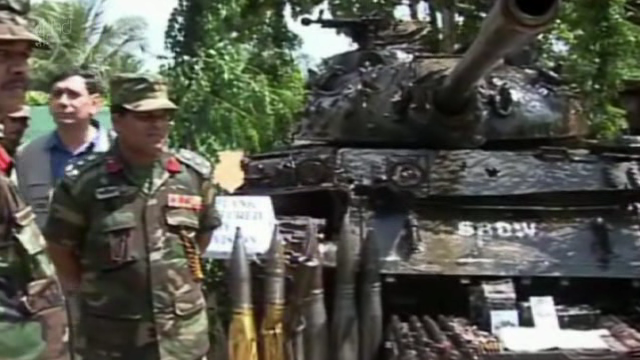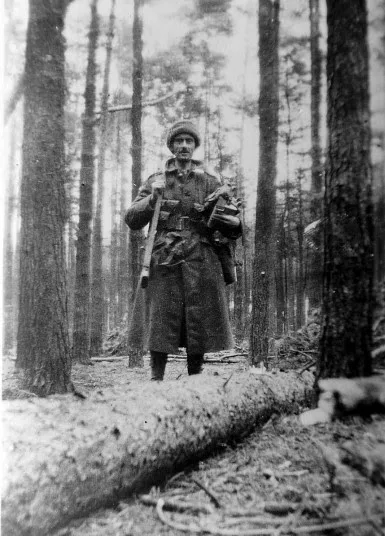No Fire Zone: The Killing Fields of Sri Lanka (2013, Documentary)
I decided to watch this award winning documentary which was aired last before the CHOGM meeting and Sri Lanka was to head the association that carries no real power but to remind (haunt) Britain of their glorious past! It only came to my attention after reading about its ban in Malaysia and the ongoing court case where the organiser of a public screening is charged.
 Just when you thought there was hope in humanity, comes this graphically disturbing images of people systematically eliminating a certain ethnic population of their own citizens. On one side there is a group demanding autonomy of the area they live and on the other, the people in power claim to hunt for perpetrators who take up arms for their course. The bottom line is that civilians are left dying left, right and centre.
Just when you thought there was hope in humanity, comes this graphically disturbing images of people systematically eliminating a certain ethnic population of their own citizens. On one side there is a group demanding autonomy of the area they live and on the other, the people in power claim to hunt for perpetrators who take up arms for their course. The bottom line is that civilians are left dying left, right and centre.

 The world is in a quandary. The Government denies any acts of wrongdoing contravening any international law. They claim that LTTE held their own people hostage and kill those who deflect. LTTE, who are guardians of the ethnic Tamil, and international UN workers categorically accuse the ruling government of drawing Tamils to areas deemed 'No Fire Zone' just to shell them to smithereens.
The world is in a quandary. The Government denies any acts of wrongdoing contravening any international law. They claim that LTTE held their own people hostage and kill those who deflect. LTTE, who are guardians of the ethnic Tamil, and international UN workers categorically accuse the ruling government of drawing Tamils to areas deemed 'No Fire Zone' just to shell them to smithereens.
This rather graphically distressing film provide forensically certified photographic evidence of genocide in the land described by Arthur C. Clarke as the most beautiful land on earth. People are zeroed into safe zones and hospitals and are repeatedly bombed till there is no place to run.
 Go ahead, watch it and spoil your whole day. It can happen anywhere. No race is immune from these. They say that the best of man comes in the worst of situations. I suppose a mob like situation, all humanity values go down the drain. The animalistic blood dirty preying fangs of survival which is deep seated in the DNA of us which survived through the prehistoric times comes into interplay!
Go ahead, watch it and spoil your whole day. It can happen anywhere. No race is immune from these. They say that the best of man comes in the worst of situations. I suppose a mob like situation, all humanity values go down the drain. The animalistic blood dirty preying fangs of survival which is deep seated in the DNA of us which survived through the prehistoric times comes into interplay!
Director: Callum Macrae
One of our lecturers (RS) back in university told us that the more we tried to hide something, the more people would want to see. And at that time, he was referring to the then sudden urge to preserve modesty or at least put a show of, by university students after 1979 Iranian Islamic Revolution. Once it is bare open, people would lose interest. Words of wisdom, come to think of it!
I decided to watch this award winning documentary which was aired last before the CHOGM meeting and Sri Lanka was to head the association that carries no real power but to remind (haunt) Britain of their glorious past! It only came to my attention after reading about its ban in Malaysia and the ongoing court case where the organiser of a public screening is charged.
 Just when you thought there was hope in humanity, comes this graphically disturbing images of people systematically eliminating a certain ethnic population of their own citizens. On one side there is a group demanding autonomy of the area they live and on the other, the people in power claim to hunt for perpetrators who take up arms for their course. The bottom line is that civilians are left dying left, right and centre.
Just when you thought there was hope in humanity, comes this graphically disturbing images of people systematically eliminating a certain ethnic population of their own citizens. On one side there is a group demanding autonomy of the area they live and on the other, the people in power claim to hunt for perpetrators who take up arms for their course. The bottom line is that civilians are left dying left, right and centre.
 The world is in a quandary. The Government denies any acts of wrongdoing contravening any international law. They claim that LTTE held their own people hostage and kill those who deflect. LTTE, who are guardians of the ethnic Tamil, and international UN workers categorically accuse the ruling government of drawing Tamils to areas deemed 'No Fire Zone' just to shell them to smithereens.
The world is in a quandary. The Government denies any acts of wrongdoing contravening any international law. They claim that LTTE held their own people hostage and kill those who deflect. LTTE, who are guardians of the ethnic Tamil, and international UN workers categorically accuse the ruling government of drawing Tamils to areas deemed 'No Fire Zone' just to shell them to smithereens.This rather graphically distressing film provide forensically certified photographic evidence of genocide in the land described by Arthur C. Clarke as the most beautiful land on earth. People are zeroed into safe zones and hospitals and are repeatedly bombed till there is no place to run.
 Go ahead, watch it and spoil your whole day. It can happen anywhere. No race is immune from these. They say that the best of man comes in the worst of situations. I suppose a mob like situation, all humanity values go down the drain. The animalistic blood dirty preying fangs of survival which is deep seated in the DNA of us which survived through the prehistoric times comes into interplay!
Go ahead, watch it and spoil your whole day. It can happen anywhere. No race is immune from these. They say that the best of man comes in the worst of situations. I suppose a mob like situation, all humanity values go down the drain. The animalistic blood dirty preying fangs of survival which is deep seated in the DNA of us which survived through the prehistoric times comes into interplay!












































